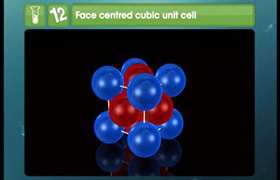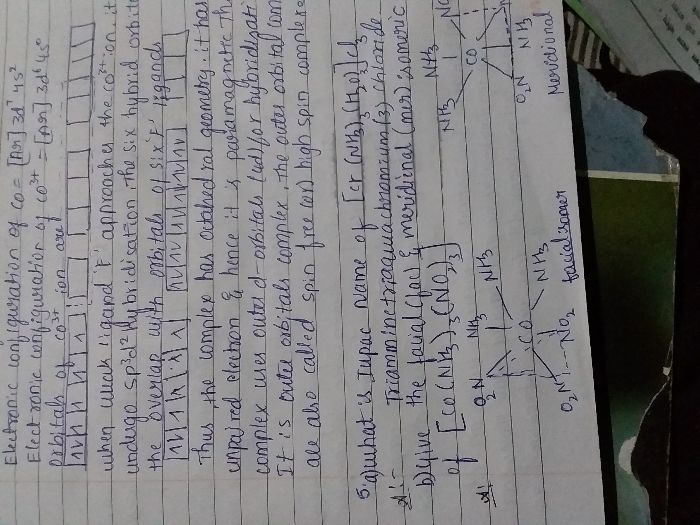CBSE Class 12-science Answered
why is it that dsp2 hybrid orbitals have sq planar geometry while sp3 have tetrahedral? However, both have 4 orbitals.
Asked by | 07 Aug, 2011, 09:02: PM
Tetrahedral is sp3 and Square planar dsp2.One example is Ni(CN)4 is square planar (evidence is from the fact that it is diamagnetic). Ni2+ has an electron configuration of [Ar] 3d8 and its orbital diagram is (in this case it is the excited state of Ni2+) so the 3d, 4s, and 3-4p orbitals are available for hybridization, which results in the hybridization dsp2.
What determines whether a four-coordinate transition metal complex is tetrahedral or square planar is the number of d-electrons in the central transition metal. If the metal has eight d-electrons, as is the case for Pt2+, it is energetically advantageous for the complex to adopt a square planar geometry. In this case, the eight d-electrons will achieve some stabilization in energy by occupying the dzx, dyz, dz2, and dxy orbitals
Answered by | 08 Aug, 2011, 05:24: PM
Concept Videos
CBSE 12-science - Chemistry
Asked by navadeepnavadeep242 | 19 Mar, 2024, 08:56: PM
CBSE 12-science - Chemistry
Asked by chaudharyanu1113 | 01 Feb, 2024, 05:12: PM
CBSE 12-science - Chemistry
Asked by dabhaniamurta | 10 Jan, 2024, 07:26: AM
CBSE 12-science - Chemistry
Asked by arjunsah797 | 13 May, 2022, 06:50: PM
CBSE 12-science - Chemistry
Asked by arjunsah797 | 10 May, 2022, 12:16: PM
CBSE 12-science - Chemistry
Asked by shivubh161 | 24 May, 2021, 03:39: PM
CBSE 12-science - Chemistry
Asked by fishtailfever | 21 Feb, 2021, 02:07: PM
CBSE 12-science - Chemistry
Asked by prathyushagn1 | 09 Dec, 2020, 08:12: AM
CBSE 12-science - Chemistry
Asked by mahesh.h.s2003 | 20 Oct, 2020, 08:47: PM
CBSE 12-science - Chemistry
Asked by ABHILASHA | 31 Aug, 2020, 08:24: PM






